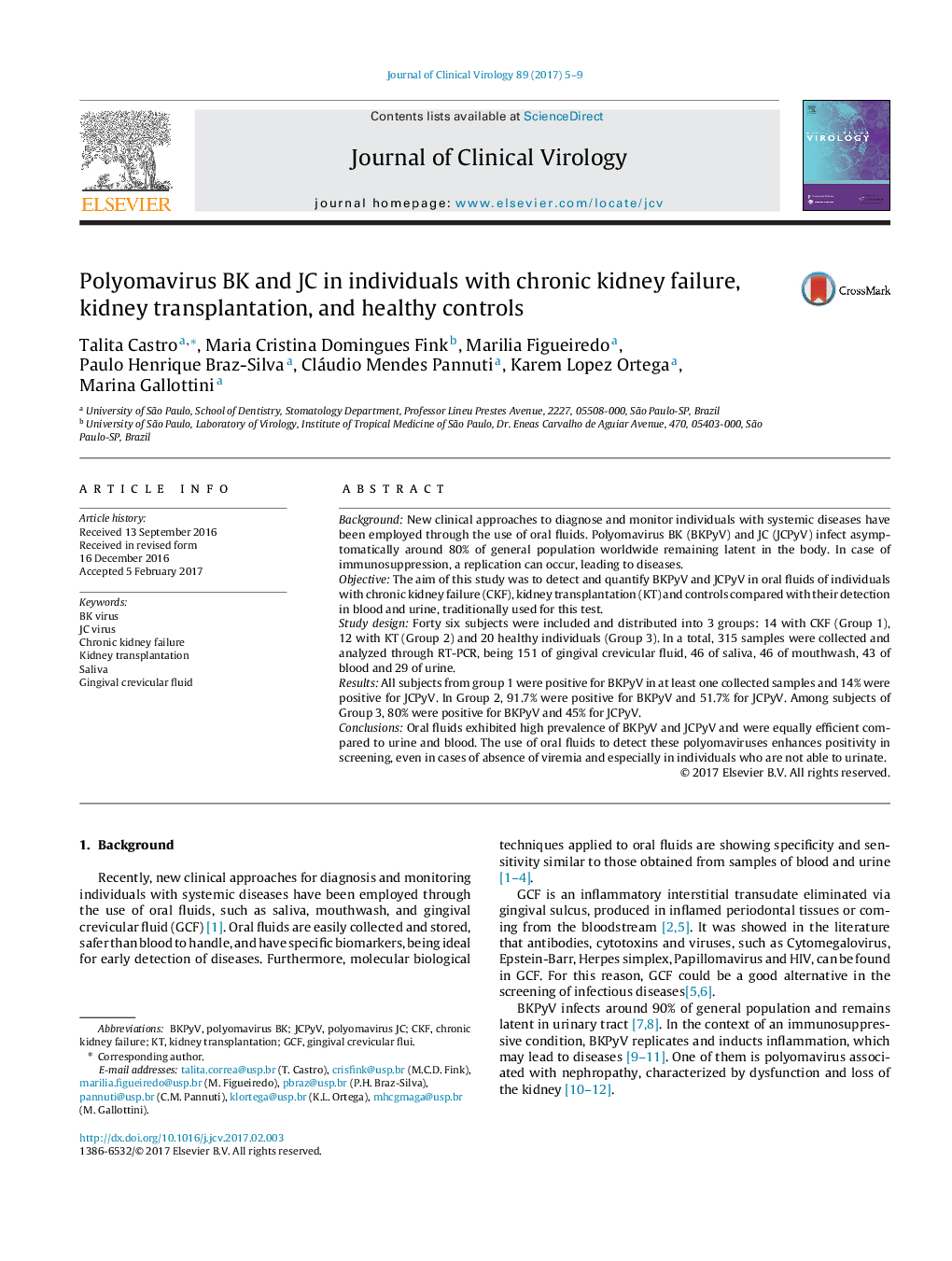| کد مقاله | کد نشریه | سال انتشار | مقاله انگلیسی | نسخه تمام متن |
|---|---|---|---|---|
| 5667987 | 1592337 | 2017 | 5 صفحه PDF | دانلود رایگان |

- Oral fluids are equally efficient to detect BKV and JCV compared to urine and blood.
- Oral fluids enhance positive screening of BKV and JCV in people who cannot urinate.
- This was the first study to detect and quantify BKV and JCV in gingival fluid.
- The salivary glands are probably a reservoir of BKV and JCV.
- High concentration of BKV and JCV in saliva suggests a transmission by this route.
BackgroundNew clinical approaches to diagnose and monitor individuals with systemic diseases have been employed through the use of oral fluids. Polyomavirus BK (BKPyV) and JC (JCPyV) infect asymptomatically around 80% of general population worldwide remaining latent in the body. In case of immunosuppression, a replication can occur, leading to diseases.ObjectiveThe aim of this study was to detect and quantify BKPyV and JCPyV in oral fluids of individuals with chronic kidney failure (CKF), kidney transplantation (KT) and controls compared with their detection in blood and urine, traditionally used for this test.Study designForty six subjects were included and distributed into 3 groups: 14 with CKF (Group 1), 12 with KT (Group 2) and 20 healthy individuals (Group 3). In a total, 315 samples were collected and analyzed through RT-PCR, being 151 of gingival crevicular fluid, 46 of saliva, 46 of mouthwash, 43 of blood and 29 of urine.ResultsAll subjects from group 1 were positive for BKPyV in at least one collected samples and 14% were positive for JCPyV. In Group 2, 91.7% were positive for BKPyV and 51.7% for JCPyV. Among subjects of Group 3, 80% were positive for BKPyV and 45% for JCPyV.ConclusionsOral fluids exhibited high prevalence of BKPyV and JCPyV and were equally efficient compared to urine and blood. The use of oral fluids to detect these polyomaviruses enhances positivity in screening, even in cases of absence of viremia and especially in individuals who are not able to urinate.
Journal: Journal of Clinical Virology - Volume 89, April 2017, Pages 5-9